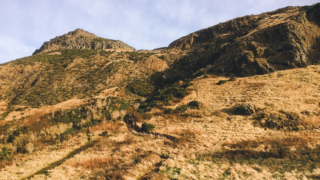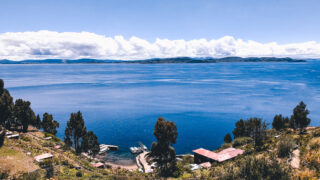Many things come to mind when thinking of Rio – Carnaval, lively beaches, Christ de Redeemer, bustling nightlife, favelas, Rodízios, and the smallest bikinis in the world – it’s Speedo heaven. Time flies by when you stay in the second biggest city of Brazil, often mistaken for being the capital. Rio has more to offer than Carnaval. There are seven sights you shouldn’t miss when visiting Rio de Janeiro.
There are hikes with stunning views over the metropolis, dizzyingly high cable car and tram rides to be taken, and graffiti riddled neighbourhoods to be explored. Trying to figure out what to do, eat, where to stay, and let your hair loose? Read on to find out.
Post Contents
WHAT TO DO
Christ De Redeemer.
The Christ de Redeemer statue is one of the seven sights you shouldn’t miss when finding yourself in Rio de Janeiro. You can either take a van transfer, train, or hike to the top of the hill through subtropical landscapes. The view over the city is impressive and the height of the hill makes you realise why the statue is one of the World Wonders. Prices vary from R$ 31 – R$ 71.
Sugarloaf Mountain.
Pão de Açúcar Mountain has more to offer than you think. You can hike alongside the tiny Marmoset monkeys, take the cable car, a helicopter, or even rock climb to the top. Prices start from R$ 65. Head here for a complete guide to the different ways of exploring Sugarloaf Mountain.
Take The Yellow Tram To Santa Teresa.


You can explore Rio’s hipster, hilltop neighbourhood easily within an hour or two. There are many shops, cafes and restaurants, Samba on the weekend, and on a clear day nice views of Rio. It is a nice experience to ride the yellow tram over the busy streets of Centro on top of aqueducts, and through the graffiti-covered neighbourhood Santa Teresa. The tram leaves every half an hour from Estação Carioca in Centro and a return-ticket costs R$ 20. The last tram leaves at 5 pm Mondays – Saturdays, and 4.30 pm on Sundays. The closest metro station to the tram stop is Carioca – L1, 2, and 4, R$ 4.60.
Favela Tour.
Favelas give you an insight into how Rio’s disadvantaged citizens live and is an opportunity to support these communities. The safest favelas can be visited with a local guide. There are a few to choose from – Santa Marta is the most colourful, Rocinha the biggest; and Vidigal has the most beautiful view over Rio.
We opted for Vidigal as tours were available in the later afternoon and you can walk through the favela. You can also book the Two Brothers Mountain tour, including a visit to Vidigal. Click here for the full read of my expereince of visiting Vidigal.
Escadaria Selarón.
The world-famous mosaic Selarón Steps are a true artwork. Expect long queues to have your picture taken. The closest metro station is Cinelândia, the lines are L1 and L4, R$ 4.60. The steps are in Lapa and can also be visited as part of a free Downtown-Lapa walking tour.
Rio Beaches.
You cannot visit Rio and not spend any time on the beach. Copacabana and Ipanema are the most famous and safest beaches in Rio and shouldn’t be missed. They are walking distance from each other, so if you don’t like one hop over to the other.
I preferred the vibe of Ipanema beach; it was less crowded, there are street musicians and you can watch the stunning orange-yellow sunset on top of the Pedra do Arpoador rock.
Both beaches can be reached by metro L1 and L4, R$ 4.60. The closest stations to Praia de Copacabana are Cardeal Arcoverde and Siqueira Campos. The closest stations to Praia de Ipanema are General Osório and Nossa Senhora da Paz.
The Museum Of Tomorrow Or The Museum Of Contemporary Art.

The exhibition at Museum do Amanhã is mostly digital and partly interactive. The main exhibition is about the future of humanity and sustainability. The museum cannot be missed, it is located at the seafront in Centro and the white skeleton looking architecture can be spotted from afar. The entrance fee is R$ 20. The museum can be reached by metro L1, L2, R$ 4.60. The Estação Uruguaiana is a ten-minute walk away.
The building of the Museu de Arte Contemporânea was designed by Oscar Niemeyer and looks like a spaceship. Unfortunately, it is on the other side of the incredibly long bridge you may have seen when visiting Christ de Redeemer. Niteroi can be reached by uber. Tip – have a look at reviews of current exhibitions before going.
WHERE TO EAT
Restaurante À Mineira Humaitá.
Rodízios can be found everywhere in Brazil, some more expensive than others. Prices start at R$ 100. This buffet-style restaurant on the other hand only charges R$ 50. Admittedly you don’t get the full Rodízio experience as no one carves meat onto your plate, but the food is delicious and there is a rich selection for every course. R. Visc. de Silva, 152 – Botafogo, Rio de Janeiro – RJ, 22271-090
Gringo Cafe.

This restaurant is worth every second of the wait. This was the best brunch I have had in South America – not that there was an awful lot of competition. The prices are what you would expect from a tourist café. But if you have been craving pancakes, Eggs Benedict, and bacon, then this place will make your heart skip a beat. R. Barão da Torre, 240 – A – Ipanema, Rio de Janeiro – RJ, 22411-000
Café do Alto.
The North-Eastern Brazilian restaurant has many delicious traditional dishes on their menu as well as burgers; and the interior is cheerfully colourful. Rua Paschoal Carlos Magno, 143 – Santa Teresa, Rio de Janeiro – RJ, 20241-310
WHICH AREA TO STAY IN RIO

This very much depends on your preferences. Copacabana and Ipanema make for a good base with easy metro access to all the major tourist spots and are situated right by the beach. You can also stay in Santa Teresa for more of a local and hipster experience, or Lapa close to the nightlife away from the beach. Although, Lapa isn’t the safest area.
WHERE TO PARTY
Two main areas come to mind when thinking of nightlife in Rio. There is Lapa, a street full of clubs and bars popular with locals and tourists alike. And there is Botafogo, one of the nicer areas in Rio full of bars. Lapa is the one for a wild night, where it doesn’t matter where you end up and Botafogo is for kicking back with a drink or four in a hipster bar.
Down Jones Market Beer.

Down Jones the place for beer lovers. This place had me amazed! You grab a pint glass, top a keyring up with money, and then you can help yourself to any of the over ten different types of beers. You can easily make your way through all of them. Remember you can fill your glass just a little bit each time. Not that I have but hey ho.
The pricing system works like a stock market. If you keep an eye on the screen you can save money by going for the less popular beers. Can someone introduce a bar like that in London? Rua Nelson Mandela, 100 Lj 121, Rio de Janeiro, State of Rio de Janeiro 22260-005
Bar da Laje.
Are you all about good views? This bar is on top of the hill of Vidigal Favela. There is live music on Fridays and Saturdays. Walking through the favela without a guide isn’t advisable. Take a moto-taxi or van from the community entrance, one of the organized vans from the bar, or an uber. The bar closes at 8 pm during the week and 10 pm on weekends. There is an entrance fee of R$ 10 – 20. Rua Armando Almeida Lima 8 Vidigal, Arvrao, Rio de Janeiro, State of Rio de Janeiro 22452-030

WHAT TO PACK
The smallest swimwear you can find, but also some warm clothes in case there is rain.
SAFETY
Be overly careful with all your belongings, especially your phone. The metro is as safe as underground systems can be. Make sure to avoid any dangerous neighbourhoods and take ubers whenever you can.
WHERE TO NEXT
Would you like to relax on an island? Then head to Ilha Grande for beach hopping, snorkelling, and hikes. Or would you rather join a Caipirinha boat party, or slide down a waterfall? Then Paraty is the one for you.
Did I do a good job of spreading curiosity for Rio? Also did I mention that I love Rodízios? Still no clue what they are? It is a Brazilian all-you-can-eat bbq, where the waiters come around with knives and skewers cutting the meat onto your plate.
Now go ahead and explore! Try not to lose your towel.


















